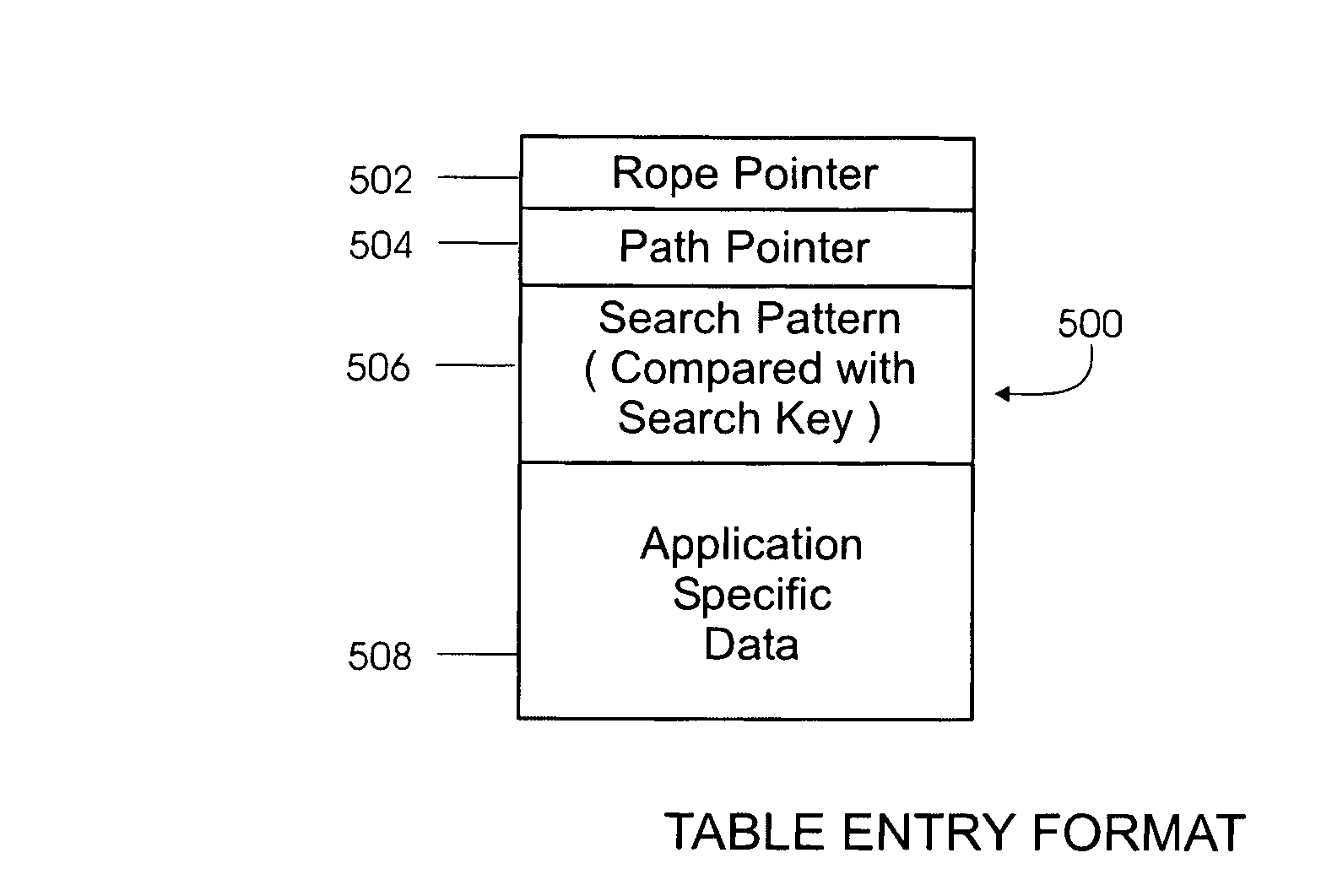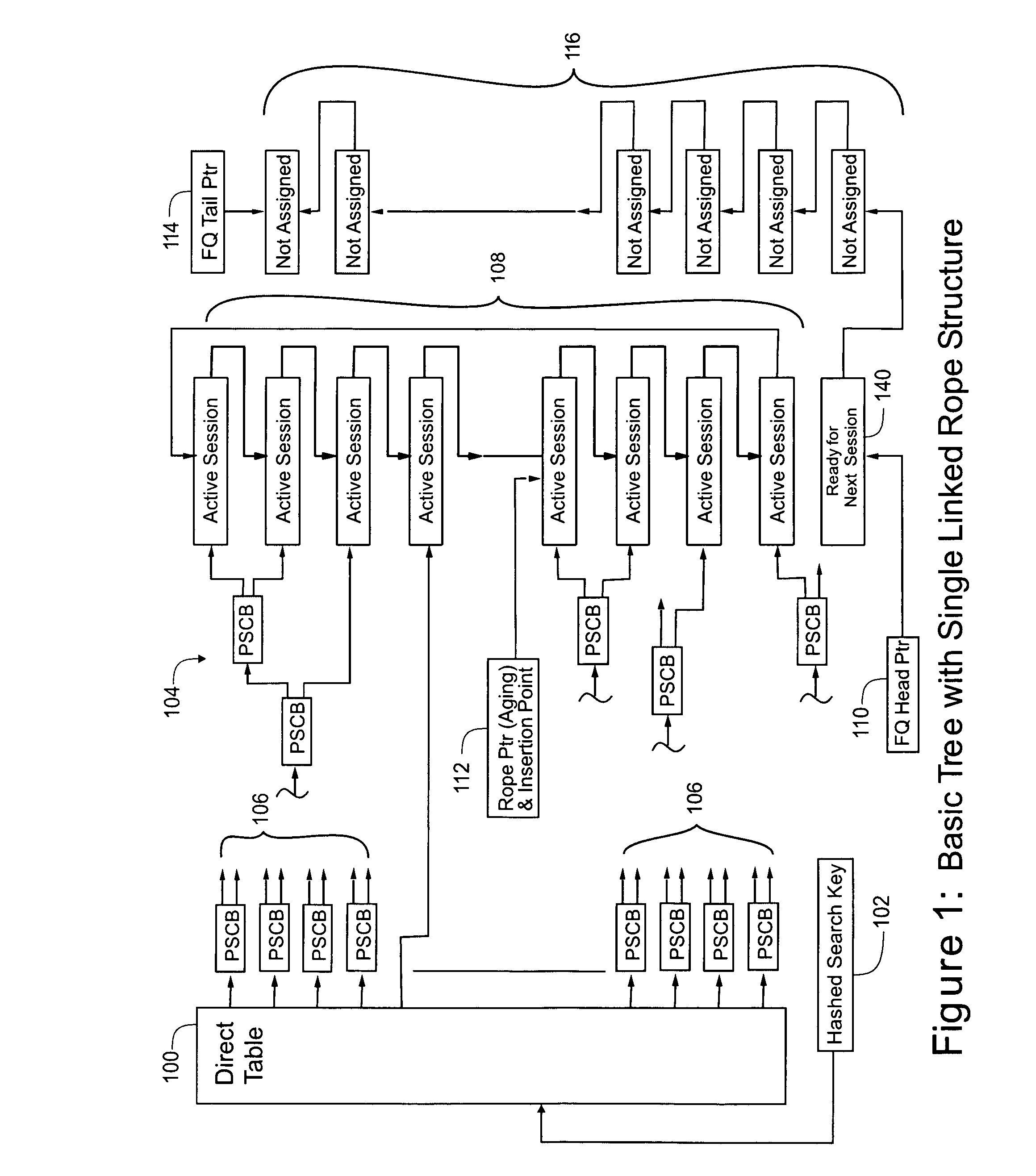Data structure supporting random delete and timer function
a data structure and timer technology, applied in the field of computer technology, can solve the problems of overflowing available memory, data structure will eventually get full, data bases to grow without bounds, etc., and achieve the effect of high rate of session addition and deletion, efficient handling of large number of active entries
- Summary
- Abstract
- Description
- Claims
- Application Information
AI Technical Summary
Benefits of technology
Problems solved by technology
Method used
Image
Examples
Embodiment Construction
[0038]As mentioned previously, FIG. 1 shows the use of random session deletes.
[0039]FIG. 2 shows the use of a double linked list in a timing or aging loop. The drawbacks of these two approaches were also previously explained. With a data structure as in FIG. 3, both random deletes and timer restart actions leave obsolete session entries within the active region of the timer loop, potentially creating unused holes in the memory resource.
[0040]According to the present invention, FIG. 4 enhances the basic mechanisms of FIGS. 1-3 for applications requiring more dynamic timer functions. In mapping from a hashed search key (not shown) to a corresponding active session entry, this data structure can utilize the same direct table 400 and pattern search control blocks 404 as before. For each search key, the chain of pointers 406 connects the entries in the DT 400 to the active sessions 408, as illustrated in FIGS. 1-3. An insertion of the next session 440 requires an advancement of the FQ he...
PUM
 Login to View More
Login to View More Abstract
Description
Claims
Application Information
 Login to View More
Login to View More - R&D
- Intellectual Property
- Life Sciences
- Materials
- Tech Scout
- Unparalleled Data Quality
- Higher Quality Content
- 60% Fewer Hallucinations
Browse by: Latest US Patents, China's latest patents, Technical Efficacy Thesaurus, Application Domain, Technology Topic, Popular Technical Reports.
© 2025 PatSnap. All rights reserved.Legal|Privacy policy|Modern Slavery Act Transparency Statement|Sitemap|About US| Contact US: help@patsnap.com



